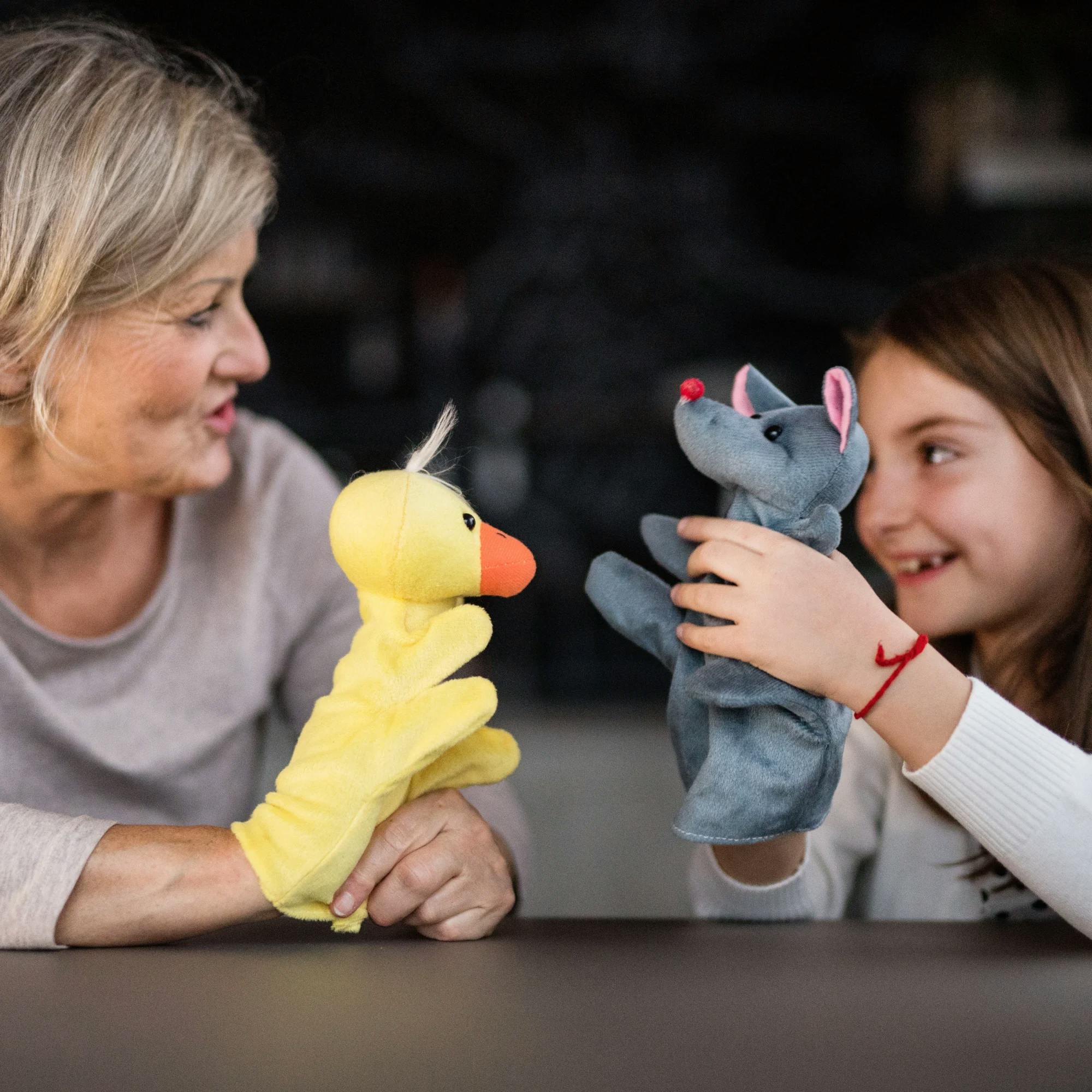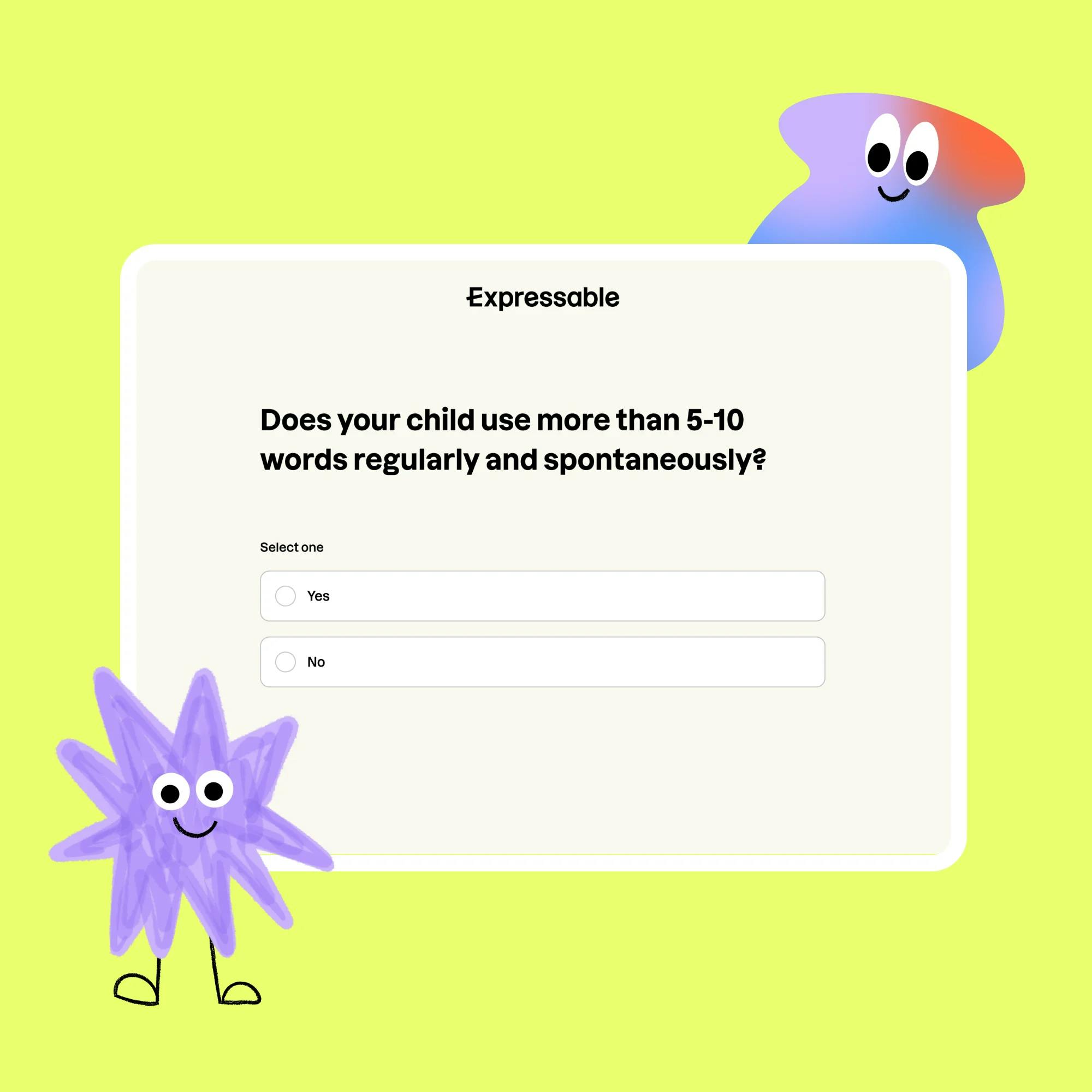Difficulty pronouncing the /l/ sound is one of the most noticeable sound errors in a child's speech. Frequent /l/ errors can make a child’s speech sound less mature and harder to understand.
For example, let's say your child is attempting to say, “I like to swim at the lake.” If they have trouble producing the /l/ sound, it may come out as: “I wike to swim at the wake.” Those sound pronunciations sound a bit babyish, right? Plus, it can make it harder for other people to comprehend what your child is trying to communicate.
Curious or concerned?
Our free screener is tailored by age and covers all areas of speech, language, and feeding. Find out if your child might need speech therapy.
 Screener for children
Screener for childrenIt's common for most children to struggle with sound pronunciations in their early days of talking. However, it's important for parents, caregivers, and teachers to be proactive and closely monitor their speech development over time. The last thing we want is for these sound errors to persist as children get older. The quicker these issues can be remediated, the more progress children will experience.
In this article, we will review common mispronunciations of the /l/ sound, what age children should master this sound, and some tips for how to improve /l/ sounds.
What do /l/ sound speech errors sound like?
There are a couple of different errors that a child may substitute for the /l/ sound. They may occur when the /l/ sound is in the initial position of the word, the middle of the word, or at the end of the word. Let’s review some of the most common.
Typically, a child will produce a /w/ in place of the /l/. Here are a few examples:
“Wight” instead of “Light”
“Wamp” instead of “Lamp”
“Pway” instead of “Play”
Another error you may observe is the “y” sound in place of the /l/. This could be observed as the following:
“Yike” instead of “Like”
“Yook” instead of “Look”
When the /l/ sound comes at the end of the word, you may see what we call a vocalization in place of the /l/ sound. It sounds like an “uh” or “w” production. In these productions the child is trying to say the /l/, but their tongue hasn't moved to the correct position. Here are a few examples:
The word “Mail” may be pronounced as “Mai-uh”
The word “Bell” may be pronounced as “Be-w”
When should your child be able to pronounce the /l/ sound?
Acquisition of the /l/ sound can happen anywhere between ages 3 and 6 years. If your child falls within this age range, and is having trouble pronouncing /l/, this is technically developmentally normal. However, there are a few things to consider.
Although a child should have their /l/ sounds mastered by age 6, it's better to begin correcting these speech productions sooner than later. If your child isn't showing some improvement between the ages of 4 and 5, it may be a good idea to speak with speech-language pathologist, also known as a speech therapist.
Although a child should have their /l/ sounds mastered by age 6, it's better to begin correcting these speech productions sooner than later.
When thinking about speech therapy, another factor to consider is overall speech intelligibility. If these speech errors are making your child hard to understand, speech therapy is generally recommended.
This isn't only because speech therapy can drastically help your child's self-esteem, but for safety purposes as well. We want children to be able to clearly communicate with everyone (not just family, friends, and those who are familiar with how their speech sounds). Decreased speech intelligibility can put children at risk if they're not able to communicate clearly in an emergency situation, or relay important information to unfamiliar people.
Tips to improve /l/ production: Tongue placement
When starting to teach your child how to pronounce /l/, spend some time in front of the mirror. Help your child become familiar with the parts of the mouth that are used when pronouncing this sound. These include the following:
Tongue/tip of the tongue
Alveolar ridge (the “bumpy part” behind the top teeth)
Lips
Jaw
Points out these different parts of the mouth while standing beside your child in the mirror. Then, see if your child can identify these different parts when staring back at themselves.
Alex's story
Just a few months of therapy led to big gains in speech sounds and conversation. Now, he can better express himself with teachers and friends.
 Read Alex's story
Read Alex's storyOnce your child is able to do this, it's time to move onto imitating correct tongue placement. When working on tongue placement, model for your child where the tip of the tongue should go--right behind the top teeth on the alveolar ridge. Have your child move their tongue to this position. See if they can hold their tongue there and observe this tongue placement in the mirror.
If your child is having a hard time with this, try placing a soft, tasty treat they love right where their tongue needs to go. This could be something like melted chocolate, peanut butter, or candy powder (like Fun Dip). Tell your child to “lick” the treat off from behind their teeth. Once they do this, explain that this is the exact position their tongue be in to help produce their /l/ sounds.
This is a very motivating trick for many kiddos. So have fun with this as you and your child practice together!
Concerned about your child's speech?
We're here for you. Get matched with a speech therapist who's experienced in your child's area of need and available when you are.
 Find a speech therapist
Find a speech therapistPracticing the /l/ sound
Once your child has a good handle on tongue placement, it's time to start practicing actual production of the /l/ sound. It can be tempting to immediately start practicing various /l/ words. However, most of the time this isn't the best place to begin. Instead, just producing the /l/ sound by itself, in isolation of other letters or sounds, is the typical starting point.
Here is the usual progression of /l/ practice that a speech therapist would follow:
Isolation level
Syllable level
Word level
Phrase level
Sentence level
Conversation level


Tips for pronouncing /l/ in words
Now that your child has mastered /l/ productions in isolation, it's time to move on to syllables or words. One thing you can do is have your child hold out the /l/ production at the beginning of the word. For example, the word “light” may be pronounced “llllllight.” This helps the child focus more on the /l/ sound instead of rushing through the word and not having enough time to think about correct tongue placement.
Be sure to continue using the mirror! A mirror provides visual feedback to help your child see if their tongue is in the correct position. They can also see any incorrect lip movements, such as rounded lips for a /w/ sound instead of a /l/. The lips should be spread and “tense,” similar to a smile. This will help a child produce the correct /l/ instead of the /w/ sound.


The importance of routine practice
As with most speech and language goals, noticeable progress doesn't always happen overnight. This applies to practicing the /l/ sound. It generally takes some time to correct these productions--but it's well worth the effort!
Remember: Don’t move too fast through practice. Make sure to spend enough time at each level of complexity before moving on to the next. By following these tips and consistently practicing, your child will be well on their way to becoming a more clear and confident communicator!
How Expressable Can Help
Concerned your child isn't reaching age-expected milestones? Looking for communication support from a professional? Expressable is a national online speech therapy practice serving children and adults. We treat all major areas of communication and feeding, offer flexible hours including evenings and weekends, and accept most major health insurance plans. We’re proud to have earned more than 3,000 5-star reviews from our clients (4.9/5 average).
Our therapy model is centered on parent and caregiver involvement. Research proves that empowering caregivers to participate in their loved one’s therapy leads to better outcomes. That’s why we combine live, 1-on-1 speech therapy with personalized education and home practice activities for faster progress.
Communication is more than words. It’s how we share how we feel and show who we are. We’re here to help you or your child do just that.
 Abby Barnes, M.S., CCC-SLP
Abby Barnes, M.S., CCC-SLP










